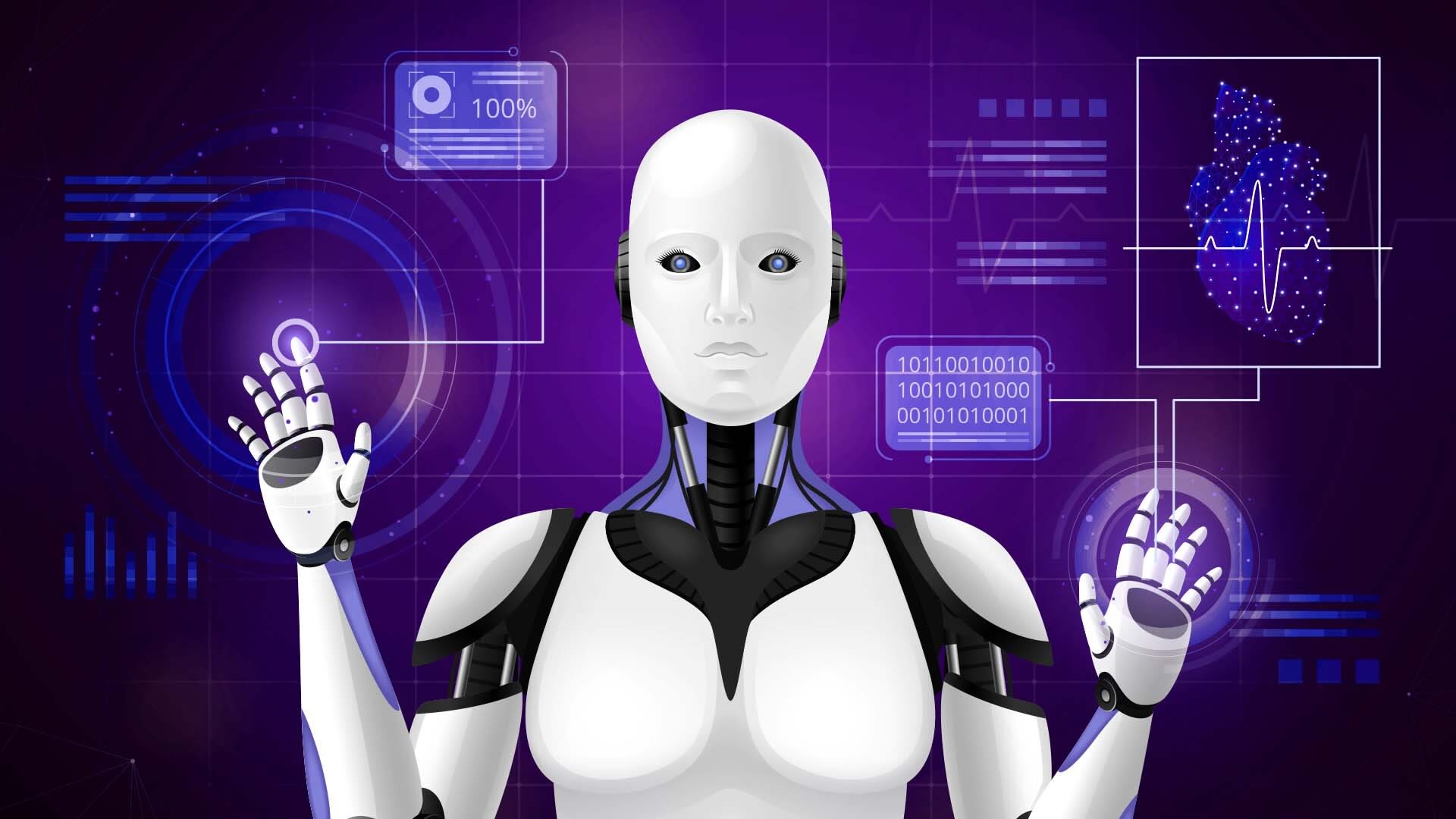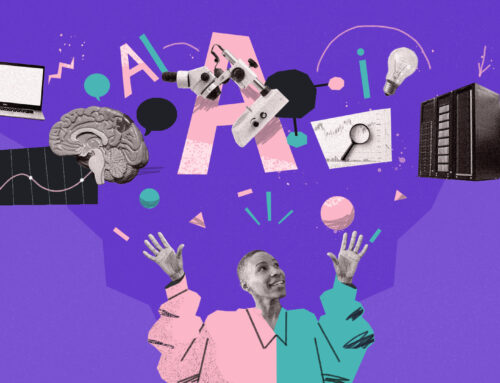Have you ever wondered how generative AI in UI/UX design is transforming the way we create digital experiences? Today, with generative AI tools, designers can streamline the entire design process, making it more efficient and user centered. By using AI tools, designers can quickly craft smarter user interfaces (UI) and improve user experiences (UX) that meet user needs in exciting new ways. It’s truly changing the game!
In UX design, the introduction of generative AI is set to revolutionize how designers work. These AI tools can analyze user feedback, adapt design principles, and even generate unique UI design ideas using natural language. This allows designers to focus on enhancing the overall user experience, while artificial intelligence takes care of the technical details, such as how to unblur images for better visual clarity. The future of UI/UX design is evolving rapidly, and it’s more exciting than ever!
How Generative AI is Transforming UI UX Design
Generative AI in UI/UX design is reshaping the way UX designers work by offering smart tools that can streamline design tasks and analyze user needs effectively. Instead of fearing that AI will replace UX designers, professionals are learning to use AI to enhance their skills and make better design decisions.
Leveraging AI for UX Research and Design
With AI in UX design, designers can now leverage AI to speed up UX research and explore design variations more quickly. By using generative AI systems, they can generate new ideas and design elements that fit seamlessly into the interface design.
AI-Powered Design Decisions
The power of AI in UX design allows for quick adaptation to changing user needs. Designers can now use generative AI to analyze user interactions and let the AI system suggest multiple design tasks and generate UI options based on user data, helping to craft better experiences.
Generative AI for User-Centered Design
Using AI to generate design elements doesn’t just save time; it also ensures that UX designers can focus on creativity, while AI handles the technical work of generating multiple design possibilities. In this way, AI UX design is helping designers build smarter, more user-friendly interfaces.

How does generative AI aid in creating user interface (UI) and user experience (UX) designs?
While some companies outsource website design, others are exploring how smart AI tools that offer helpful suggestions can provide new ways to create unique designs that were not possible before.
Here is what Matt Little, Founder and Managing Director of Festoon House, says about this:
“Generative AI can be a real game-changer for creating UI and UX designs. These AI tools can generate design elements like layouts, color schemes, and typography based on input parameters and user data. For example, if we’re designing a new interface for our website, AI can help us create several design prototypes quickly by analyzing user preferences and trends. This speeds up the design process and allows us to test different versions to see what resonates best with our customers. The AI’s ability to predict user behavior and preferences means we can design interfaces that are more likely to engage users and enhance their experience.”
Christine Dalayap, Business Executive Manager at JP Franklin Roofing, also shares her perspective:
“Generative AI revolutionizes design by streamlining repetitive tasks and generating tailored solutions to meet customer demands. Using cutting-edge tools like Uizard and Framer AI, designers can effortlessly produce prototypes from basic text prompts, driving remarkable efficiency gains. This efficiency can lead to a 30% reduction in project deadlines, empowering teams to prioritize critical tasks over mundane responsibilities.”
This change means that the design community will need to learn how to use these tools effectively while keeping in mind the importance of responsible AI.
How do AI-generated designs affect the collaboration between designers and developers?
Integrating AI into the design process will help teams understand users’ needs better. It will also provide valuable insights, allowing designers to create experiences that truly connect with their audience. Matt Little shares his thoughts:
“With AI handling the initial design drafts, developers receive more polished starting points, which can streamline the development process. This can lead to faster implementation times and fewer iterations. However, this shift also brings challenges. Designers might find themselves working more as curators and refiners of AI-generated content rather than starting from scratch. This means there’s a new dynamic in collaboration, where designers need to work closely with AI to ensure the generated designs meet the specific needs and vision of the project. It also requires clear communication between designers and developers to ensure that the AI’s output aligns with the functional requirements of the project.”
Christine Dalayap adds, “Based on my experience, integrating human expertise with AI-generated designs leads to innovative solutions that meet user needs while preserving a personal touch. The future of design seems promising as these technologies combine creativity with efficiency.”
By embracing AI in design, we can look forward to more personalized experiences that make a real difference, blending technology with creativity in exciting ways.
Creating Personalized User Experiences with Generative AI Tools
Generative AI in UI/UX design is changing how designers make personalized experiences. With AI design tools, designers can now generate multiple design concepts quickly, which helps save time and makes the overall user experience better. AI can assist in creating designs that match the user’s behavior and preferences, making the process faster. Here, AI doesn’t replace designers but helps them focus more on creativity and problem-solving.
By using generative AI algorithms and generative tools, designers can:
- Use AI to automate repetitive tasks, letting them focus on more important work.
- Use AI to create and explore different design concepts.
- Rely on gen AI models to improve the UX design process and make it easier.
Generative AI is reshaping how we think about experience design. AI is a powerful tool that handles many technical parts of UX design, like testing and adjusting layouts, so designers can focus on creativity. AI analyzes user data and helps improve designs, making UX design more interactive and responsive.
Challenges and Limitations of Using Generative AI in Design
While generative AI in UI/UX design has many benefits, it also has some challenges. As AI continues to evolve, there are still certain limits when using AI tools like generative AI throughout the design process. These new AI tools might not always give perfect results, and designers need to combine human design creativity with AI’s speed and efficiency.
Some challenges include:
- AI may find it difficult to understand the emotional and creative side of design, which is important in the field of UX.
- Although AI can process a lot of data and create multiple design variations, it sometimes misses the personal touch that traditional design techniques offer.
- Advanced AI systems can make the design workflow complicated, as designers still need to review and improve AI-generated designs like AI image and interface designs.
Even with these challenges, using design tools and techniques powered by AI can still enhance your design process. But it’s important to remember that AI works best as a helpful design assistant, not a full replacement for human design.
The Future of Generative AI in UI/UX Design
The future of generative AI in UI/UX design looks very bright. As AI excels in many tasks, it will take on a bigger role in design projects. With AI features that can give helpful design suggestions, designers will have tools to create novel designs that were not possible before. This change means that the design community will need to learn how to use these tools well while keeping in mind the idea of responsible AI.
Making AI a part of the design process will help teams have a deep understanding of user needs. It will also help generate new data, allowing designers to create user experiences that resonate with their audience. By using generative AI in UI/UX design, we can look forward to more personalized user experiences that truly make a difference, combining technology with creativity in exciting ways.


